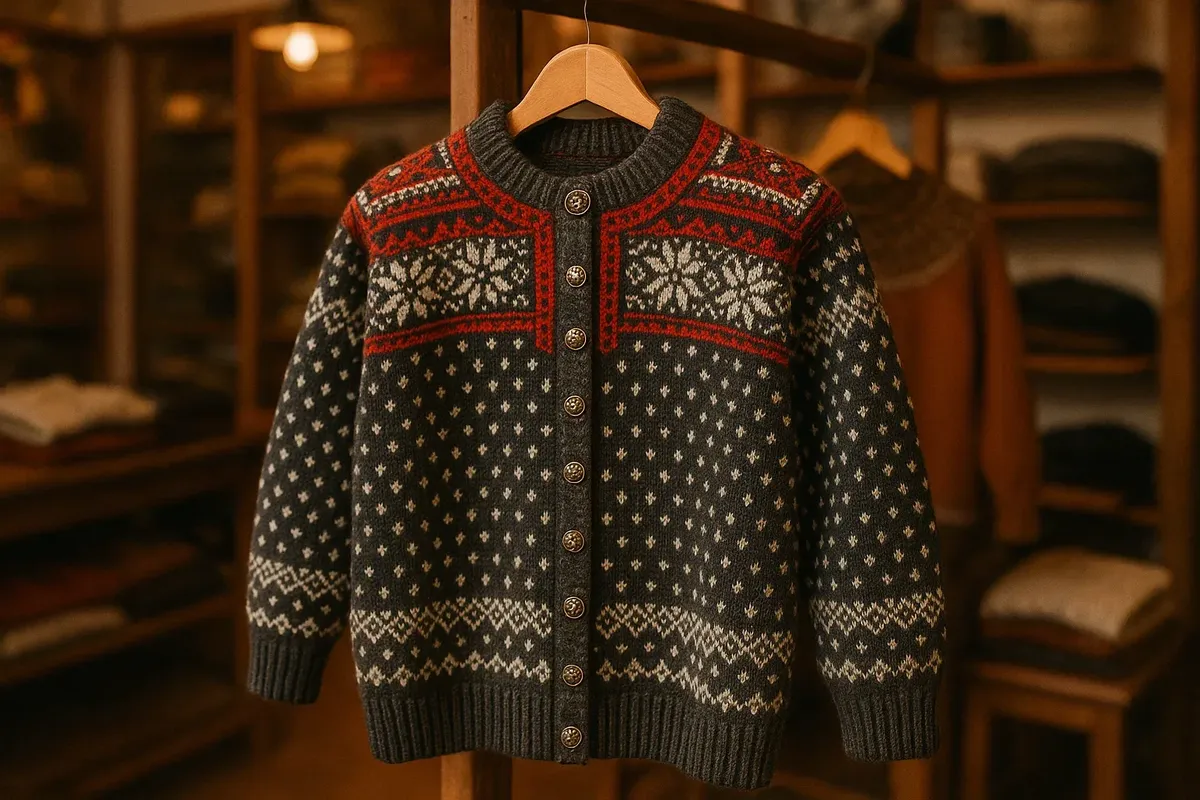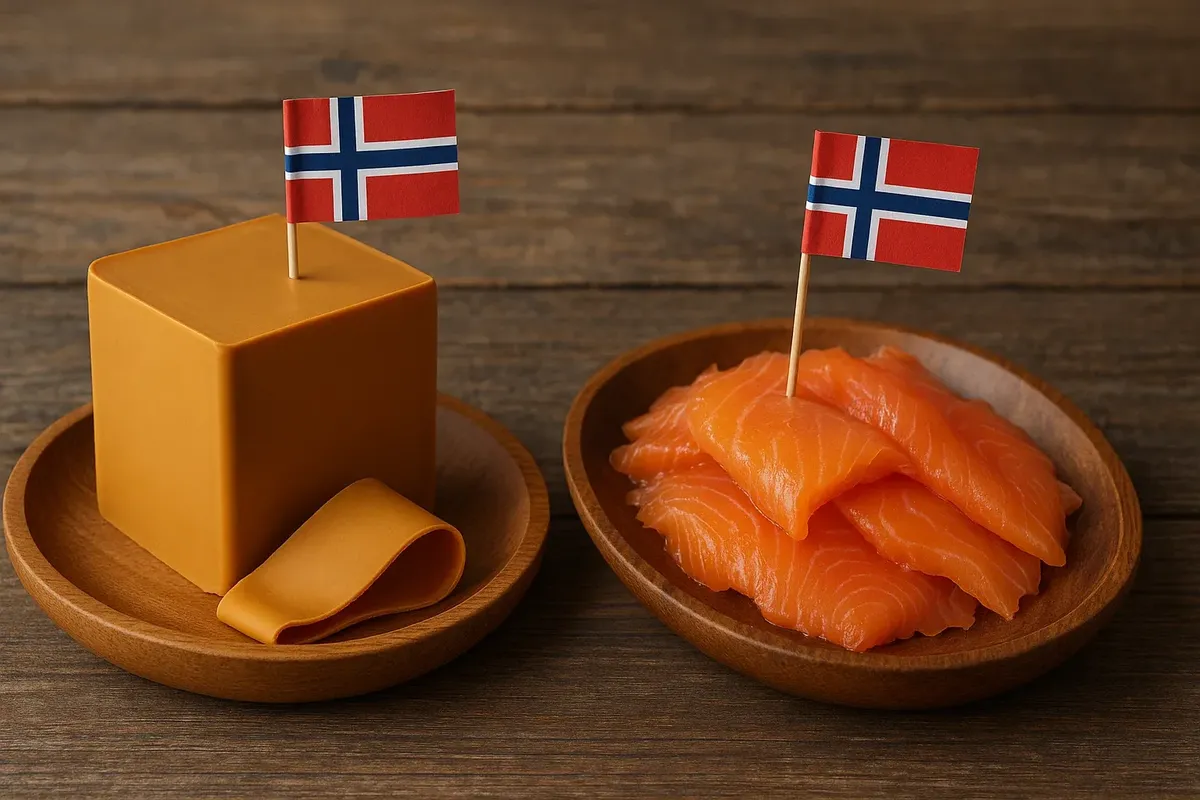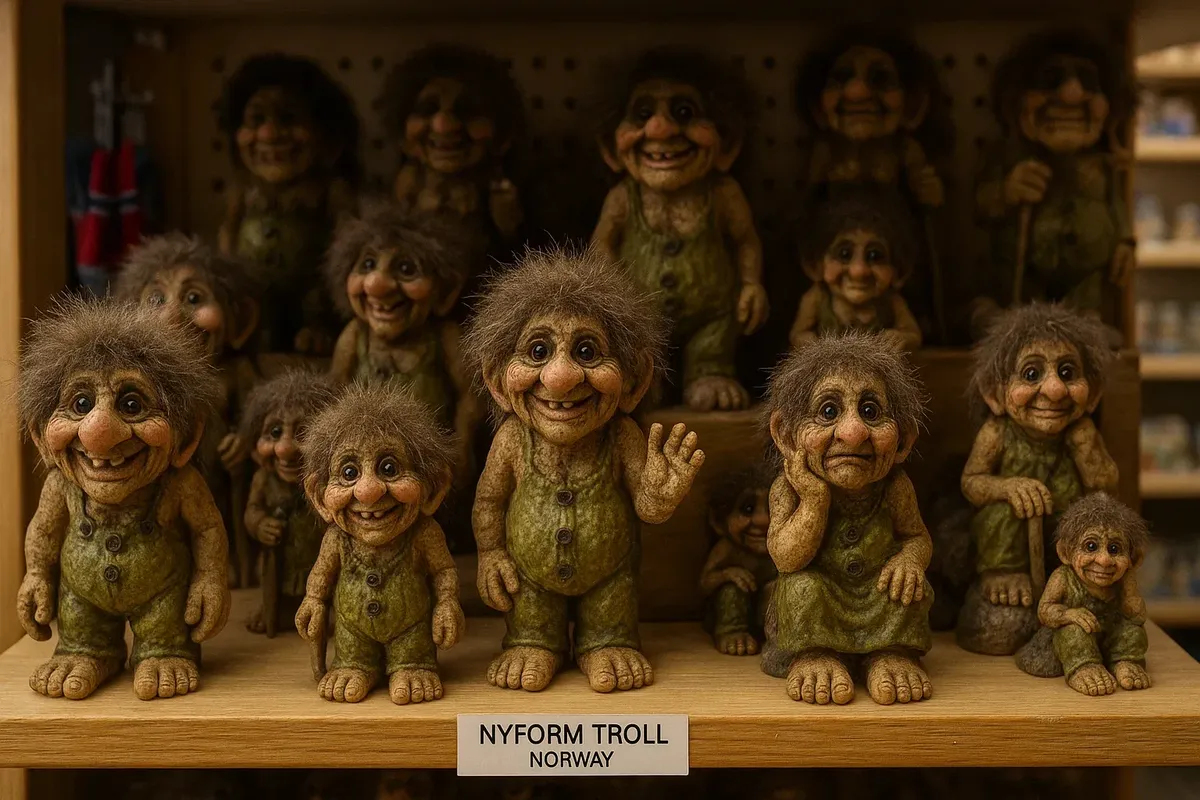🛍️ Souvenirs and shopping without breaking the bank: what and where to buy in Norway (2025 guide)
Norwegian souvenirs are not just wooden trolls and herring tins. Scandinavian design, wool sweaters, Arctic cosmetics, and unique foods can easily become meaningful gifts — if you know where to find them at local prices, rather than as a confused tourist from a cruise ship. Below are 10 common questions about shopping and souvenirs, with current prices, hidden locations and little tricks that will save you lots of money and weight in your luggage.
🧶 How much does ‘the one’ Norwegian sweater cost and where can I get it cheaper?
The classic Lusekofte (flea pattern) from Dale of Norway on Karl Johans gate costs €179/1890 kr. At the Norwegian Outlet Vestby (30 minutes from Oslo, bus M2), last year's collection is reduced to €119; at the end of the season, there is an additional 30% discount. Students get an extra 10% off with an ISIC card. Another option is the small Rauma Ullvare factory, where you can buy unbranded sweaters made from the same wool for 950 kr at Bondens Marked markets (every Saturday). Check the label: it will say 100% wool, made in Norway, and the item will last for decades.

🧀 Brunost, salmon, cod: what can you take across the border?
You can buy Brunost cheese (a type of brown goat's cheese) at Kiwi for €7/500 g. If you keep it in a vacuum pack, it will last for six months. Fish: buy whole, lightly salted salmon vacuum-packed fillets for €32/kg at MENY. You can take 10 kg of fish out of the country with you, as long as you have a receipt from a store that is registered. Dried cod klippfisk — €18/kg, stored at room temperature; a great souvenir. You can't export deer meat without a veterinary certificate and antlers have to be removed from wild animals. Check the rules of your destination country for dairy products; there are no restrictions on Brunost in the EU, but there is a 5kg limit in the USA.

👹 How can you avoid buying Chinese plastic trolls made in Norway?
Troll NyForm figurines are made from a mixture of latex and clay. They are stamped with the words 'Made in Norway' and have a serial number under the sole. A 7 cm mini figurine costs €14, and a 15 cm figurine costs €29. Tourist shops near cruise piers charge 25% more. You can visit the Ark bookshop or Coop Mega supermarket, where you will find NyForm stands without having to pay more than other customers. If you see a smooth plastic line, it's a Chinese copy, which isn't worth paying more for.

💍 How much do the jewellery and Viking silver cost, and what are the taxes?
A 3 cm Valknut pendant made from 925 standard silver by David-Andersen costs €79. The Drakar earrings cost €89. There is a 20% discount during the autumn 'Silver Week'. Small workshops, like Hasla in Setesdal, sell earrings for €42. If you spend more than 315 kr in one go, you can get 19% of the tax back (the tax was 25%, so the refund is about 12%). Go to the Global Blue desk at the airport. There, you will find a form that you can fill out. After that, you will need to have it stamped at the border. Then, you will get the money back on your card within 60 days.
🍒 Are cosmetics made from Arctic berries just a marketing gimmick, or do they really work?
The brands RÅ Organic and Fitjar Islands use cloudberry and sea buckthorn oil, which are rich in vitamin C. You can buy the creams for between €29 and €45 (50 ml). At Duty-Free OSL, the Travel Skin set costs €39 (15% off the city price). If you just want the 'scent of Norway', try RÅ Hav soap — it costs €9, has a juniper and seaweed smell, weighs 95 g (it won't break or leak).
🏔️ Where can you get discounts on outdoor equipment by Norrøna, Bergans and Helly Hansen?
Here are the retail prices in central Oslo: The Norrøna Falketind jacket costs €469. Go to Sport Outlet (Alnabru) where you can get last season's items at 40% off. There is also the Ull-fest sale in March and April, when you can get 50% off Devold thermal underwear. The second shortcut is the Tise and Finn Torget apps. Here you can find a lightly used Gore-Tex jacket for €120. For Tax Free, you need a receipt for more than 315 kr for a new item, so second-hand items are only suitable for residents.
🪑 We sell Scandinavian-style home decor, including Kay Bojesen figurines and Muuto lamps.
Bojesen oak 'singing bird' — €95. At Illums Bolighus Outlet (Vestby) — get 30% off. The Muuto E27 lamp costs €69 at Budø Outlet and €89 in Oslo. Remember the weight: the glass and cable together can easily fit in extra luggage. The online store will ship to the EU without VAT, but local tax and shipping will be added.
🧾 Tax Free: step by step, how much will you get back and what are the pitfalls?
1) You must have one receipt that is worth at least 315 kr.
2) The cashier will print out a Global Blue/Planet form.
3) At the border, show your goods and get them stamped.
4) Just put the form in the box or scan it, and the money will be put on your card in 3–8 weeks. To find out how much you will get back, just do this calculation: price tag / 1.25 x 0.19. You get 152 kr back for every 1,000 kr you spend. Things to watch out for:
- You cannot get tax back on food, tobacco or alcohol.
- If the packaging is damaged (if it's been used), you won't get your money back.
📦 Is online shopping and delivery in Europe worth it?
The Oda.no store only delivers non-food items within Norway. Bergans Outlet ships to the EU with 25% VAT deducted, but delivery costs €29. With a €200 discount, a jacket is still cheaper than the €320 retail price in Germany. Look out for 'MVA-fritak' — parcels of up to 3,000 kr are exempt from Norwegian VAT, even for non-residents.
🚫 Souvenir anti-rating: what not to buy?
1) Frozen shrimp melt on the way.
2) Smoked whale: this will be taken away when it is brought into the EU.
3) Mammoth tooth from eBay — often fake, and you'll need a CITES permit to buy it.
4) Cheap 'Hardanger' knives — made in China, €40, the real thing in a museum — €190, they are of incomparable quality.
Buy items that are made in Norway, not just those with a Norwegian flag on the label.
If you want to enjoy shopping in Norway, there are three rules you should follow:
- Stay away from the streets where cruise ships dock.
- Look for shops that sell outlet items.
- Look for shops that sell tax-free items.
- Look for items marked 'Made in Norway'.
Then a wool sweater will cost the same as a normal pullover in Europe, the troll will be real, and the salmon will be fresh and legal to import. Don't spend too much money when you're buying presents for people. Have fun looking for real Norwegian treasures!




2 comments
Log in to leave a comment
Hvilke suvenirer anbefaler dere som både er typisk norske og rimelige?